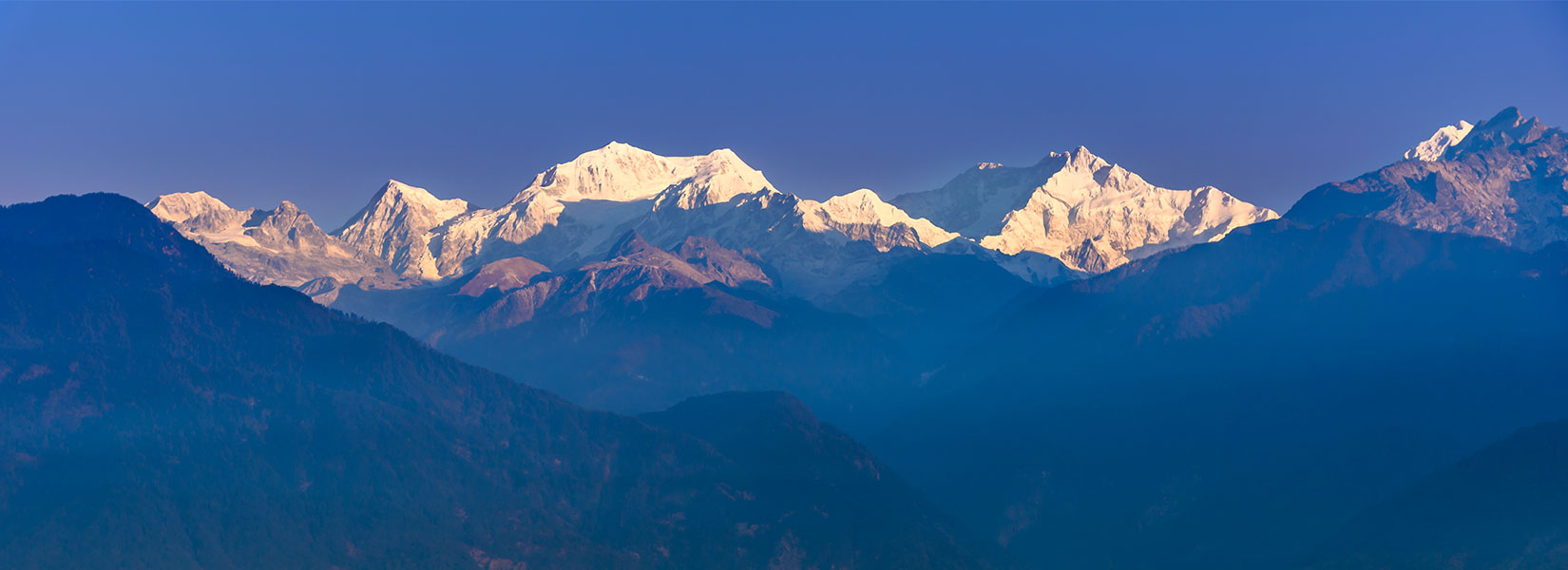Kanchenjunga Trek is an exhilarating journey in Eastern Nepal that offers mesmerizing views of the pristine mountain panorama. The trek has gradually captured the attention of adventurers because of the stunning views of the unique landscapes of the region. Knowing the best time to trek Kanchenjunga is essential to fully enjoy the experience, as it allows you to witness clear views of the South and North base camps and the majestic snow-clad peaks. In addition, you will cross the scenic Sele La Pass from where the beautiful views of the Kanchenjunga range can be seen. This incredible trek presents magnificent views of Mt Kanchenjunga, Jannu Himal, Kabru, and many other surrounding peaks.
Choosing the best time to visit Kanchenjunga allows you to have an enriching trekking experience. However, to get the maximum perks, it is important to select a suitable season that rewards you with excellent views and an enchanting journey. Among the four main seasons of Nepal (Spring, Autumn, Summer/Monsoon, and Winter), Autumn and Spring are considered the best time to trek Kanchenjunga . The beautiful views, stable weather, and favorable trekking atmosphere have made autumn and spring the most preferred time to embark on the journey. In this article, let's learn how the Kanchenjunga Region is every season so that you can choose the right time to partake in this exciting adventure.
Kanchenjunga Trek in Spring (March to May)

Spring is considered one of the best times to embark on the Kanchenjunga Trek. It is also one of the best times to embark on the journey. Some of the reasons why spring is considered as one of the best time to trek Kanchenjunga are:
Beautiful Landscapes
Spring is described as the season of renewal. The paths are decorated with blooming rhododendrons and wildflowers. The hills and valleys are lush, and the beautiful flowers nestled in the tranquil hills and forests present the picturesque scenery. The landscapes of the Kanchenjunga Region are the most scenic and full of life in the month of spring. The presence of flowers along the trail adds to the aesthetics of the region and provides you with an opportunity to capture surreal pictures of the Himalayas.
Stable Weather
Spring is the best time to trek kanchenjunga with stable weather. The temperature is mild, and you are less likely to face any weather-related challenges. The weather is beautiful and the skies are clear, which presents you with stunning views of the green hills and snow-clad mountains. The trails are drier, and you will have the most comfortable walking experience because of the moderate weather without worrying about the occurrence of any unexpected events. You can connect with nature on a deeper level and also complete the trek in the most convenient way because of the favorable weather conditions.
Pleasant Trekking Atmosphere
The weather is delightful in spring which makes the whole trekking experience exhilarating and memorable. The fresh air and long daylight hours allow you to walk while feeling the serenity of nature at your own pace. The weather is beautiful, and you will traverse through beautiful trails, feeling the peacefulness of nature.
Some Tips for Kanchenjunga Trek in Spring
- Spring is the peak trekking season, so book the trip earlier.
- Maintain proper hydration and nutrition.
- The mornings and nighttime in the mountain region are mostly cold, so make sure to pack warm clothes.
- Trek at a gradual pace; don't rush or over-exhaust yourself.
Is Autumn the best time for the Kanchenjunga Trek?
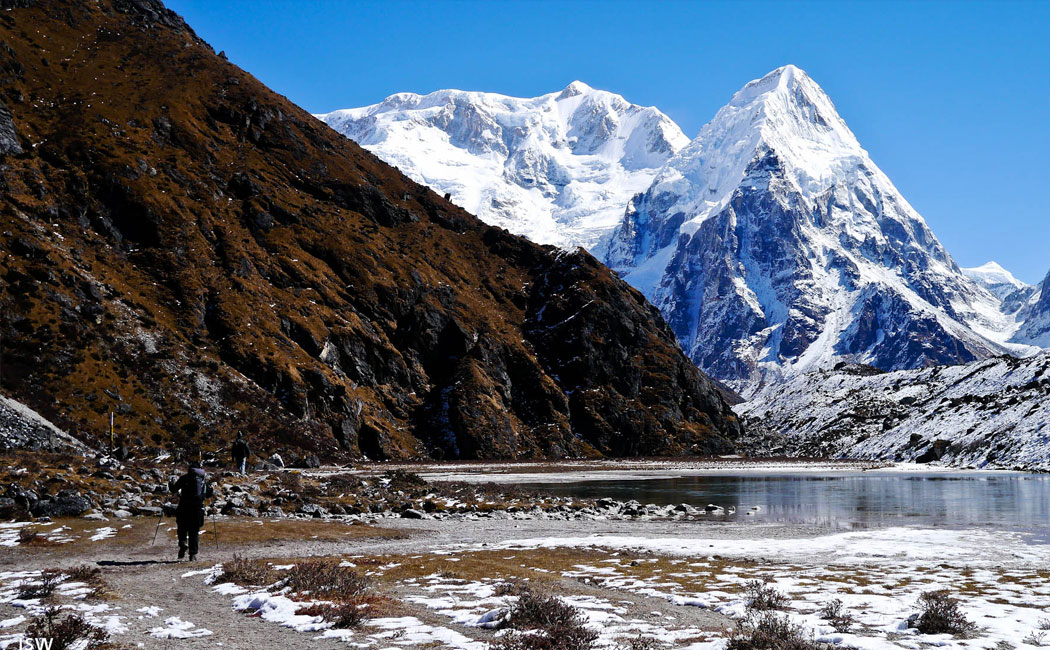
The Autumn Season (September to November) is considered the ideal time to embark on the Kanchenjunga Trek. The beauty of the Kanchenjunga can be witnessed in its best form in the Autumn season. The daytime temperature in autumn is moderate, and the breathtaking views of the snow-capped mountains are seen, which has made it stand out as the top choice among trekking enthusiasts.
Perks of Kanchenjunga Trek in Autumn
Clear Skies
The humidity level is low in the autumn season, and the temperature is cool with fewer clouds in the sky. So, the skies are clear, and you can get uninterrupted views of the majestic hills and mountains. The skies of autumn appear beautiful, and the day is bright, which provides you numerous chances to capture panoramic pictures of the alluring peaks and beautiful hills of the region.
Mesmerizing Sceneries
The visibility is excellent in autumn, and the crystal clear views of the snowy mountains, such as Mt Kanchenjunga, Jannu Himal, Mera, Talung, Kabru, and many other surrounding peaks are seen. The hills, high passes, and pristine glaciers look surreal and showcase the magnificent beauty. The rivers and waterfalls add to the beauty of the surroundings. All these aspects add up together and reward you with enchanting sceneries uplifting your sightseeing experience.
Favorable Weather
The weather of autumn is suitable for trekking and exploration. When the weather favors, you will have a comfortable and convenient walk and enjoy trekking to the fullest. The air is crisp, and the environment is pleasant. The trails are dry and it makes trekking easier, which helps you to reach the determined destination on time and also complete the trek smoothly. The humidity is low, and the temperature is moderate, which makes the whole trekking experience exhilarating and immersive. The chances of rainfall, especially after mid-September, are minimal, which offers you a chance to trek through the most favorable trail conditions, rewarding you with an enjoyable and memorable journey.
Tips for Kanchenjunga Trek in Autumn
- Start the trek early, as it will help you to reach the predetermined destination in time.
- Be well-equipped with essential trekking gear.
- Maintain a balanced diet and hydration for staying healthy and fit throughout the trek.
- During early September, there are the possibilities of rainfall, so make sure to carry rain gear to protect yourself from rain.
- Make sure to acclimatize by incorporating rest days.
Kanchenjunga Trek in Summer/ Monsoon (June to August)

The Kanchenjunga trek in the summer/ monsoon season is filled with challenges and rewards. Some of the rewards include the tranquil pathways, lush sceneries, and distinct views of mountains, especially when the weather clears up after the rainfall. The rainfall nourishes the landscape, and it is full of life in the summer/ monsoon season, which presents unique scenery.
The hills and valleys are verdant, and after the downpour, the environment is cleaner and refreshing. One of the most common sights that is common during the summer/monsoon season is the unique formation of floating clouds and mist that surrounds the mountain. This distinct scenery looks surreal and elevates your sightseeing experience. Besides, the trails are not crowded, which provides you a chance to trek while immersing in the serenity of nature.
While we mention the perks of trekking to Kanchenjunga in summer/ monsoon season. It is also important to be aware of the challenges that come along when trekking and be well-prepared for the journey with proper training, planning, and preparation.
Challenges of Summer/ Monsoon
Presence of Bugs and Leeches
The bugs and leeches also create unpleasant experiences. The leeches survive in moist environments and mostly exist in the forested area. It causes discomfort when it gets stuck to the skin, which is one of the major cons of trekking in summer/monsoon season. You should wear long-sleeved clothes and sturdy hiking boots to stay protected. In case it gets stuck to your skin, you should try to detach it, flicking it away gently.
Rapid Weather Fluctuations
Weather fluctuations are common in mountain regions and during monsoons, the effects are seen more because the rainfall can occur at any moment. Besides, the risk of any unforeseen events like floods or landslides is high in the summer/ monsoon season. If, on any particular day during the trek, the weather doesn’t look favorable, then you shouldn’t head outside on the trek to ensure safety. You should be well aware of the weather patterns of the mountain region and start the trek only after being sure that it's completely safe.
Slippery Trails
During the summer/ monsoon season, the trails can get slippery and muddy because of the frequent downpours. When the terrain is wet, you have to be extra careful in navigation to avoid slips and injuries. So, you should trek with the support of trekking poles to minimize the possibility of slipping. The muddy, uneven, and slippery trails are certainly more challenging and time-consuming to traverse than the drier trails. However, you should be cautious and start the trek only after ensuring the trails are safe and secure to traverse.
Tips for Kanchenjunga in summer/monsoon
- Carry insect repellent.
- Follow proper instructions given by the guide before navigating the challenging terrains.
- Make sure to check weather forecasts and do not trek in unfavorable weather conditions.
- Be flexible with your schedule or itinerary, and be ready for any rescheduling or modification.
- Make sure to pack rain gears and multiple pairs of moisture-wicking shocks.
Kanchenjunga Trek in Winter (December to February)
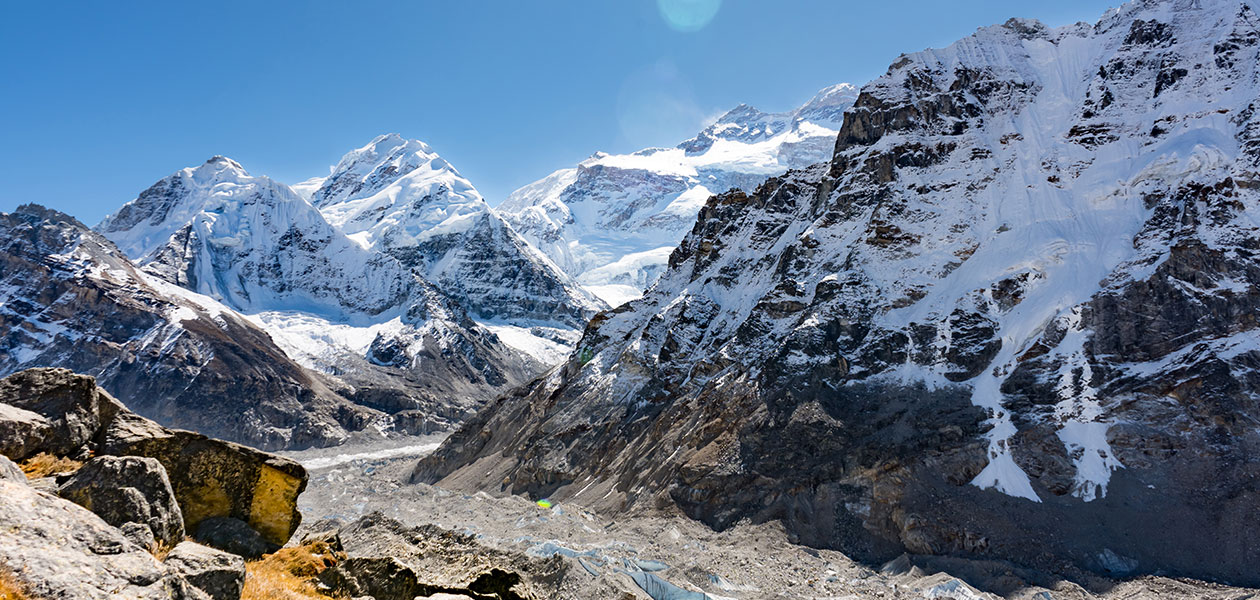
The views of the snow-clad mountains are clear and surreal in winter. However, because of the extreme cold, the teahouses in the upper zones can stay closed. The region itself is remote, and the trail passes through off-beaten paths, so finding accommodation in the higher zones can be difficult, and you may have to stay in camps.
The winter scenery is beautiful, the mountains are covered with a thick layer of snow, and the beauty of nature is magnificent at this time of the year. Besides, the trails are tranquil, too, which can offer a peaceful trekking experience but it is important to understand the challenges and embark on the journey only with proper training, planning, preparation, and advice of the experts.
Challenges of Winter
Cold Weather
One of the major challenges of Kanchenjunga Trek in winter is extreme cold weather, especially during the morning and night. You must have the ability to handle the cold if you are planning to embark on the journey in winter. The region gets coldest in January, and temperatures decrease below the freezing point throughout the winter months. Trekking in such conditions requires a good level of physical strength and endurance to handle the cold and conclude the trek smoothly.
Heavy Packing
Trekking in the winter season requires heavy packing compared to other seasons. The Kanchenjunga region is bitterly cold during winter, so you need to pack clothes accordingly. You should wear layered clothing and pack all the warm clothes, which makes the backpack heavier compared to the other seasons. Even tough heavy packing seems challenging, it is necessary, especially during winter, because you need to be warmly dressed to protect yourself from cold.
Navigation Difficulties
The pathways of the higher zones are covered with snow, which makes navigation challenging. When the trails are dry, it is easier to traverse without the risk of slips. However, when the terrain is full of thick layers of snow, trekking can be difficult. The possibility of injuries increases because of the increased risk of slips and falls. The days are shorter during winter, and traversing through the slippery, snowy surfaces can take more time, and you may not be able to reach the destination at a pre-determined time.
Tips for Kanchenjunga Trek in Winter
- Wear layered clothing and insulated hiking boots while trekking.
- Incorporate acclimatization days and be well aware of how your body is reacting in a changing environment.
- Begin the Trek early in the morning as the days are short in winter, and daylight is limited.
- Take breaks and take gradual ascents to minimize the risk of altitude sickness.
- Make sure to take insights from the guides while traversing snowy sections.
- Maintain a balanced diet and be well-hydrated.
- Inquire about the availability of accommodation and trek only after confirming the booking for a secure journey.
- Make sure to include trekking poles and good-quality sleeping bags in your backpack.
- Be careful and follow the instructions of the guide when navigating through the challenging high passes of Kanchenjunga.
Factors That You Should Consider While Choosing the Right Time to Trek Kanchenjunga
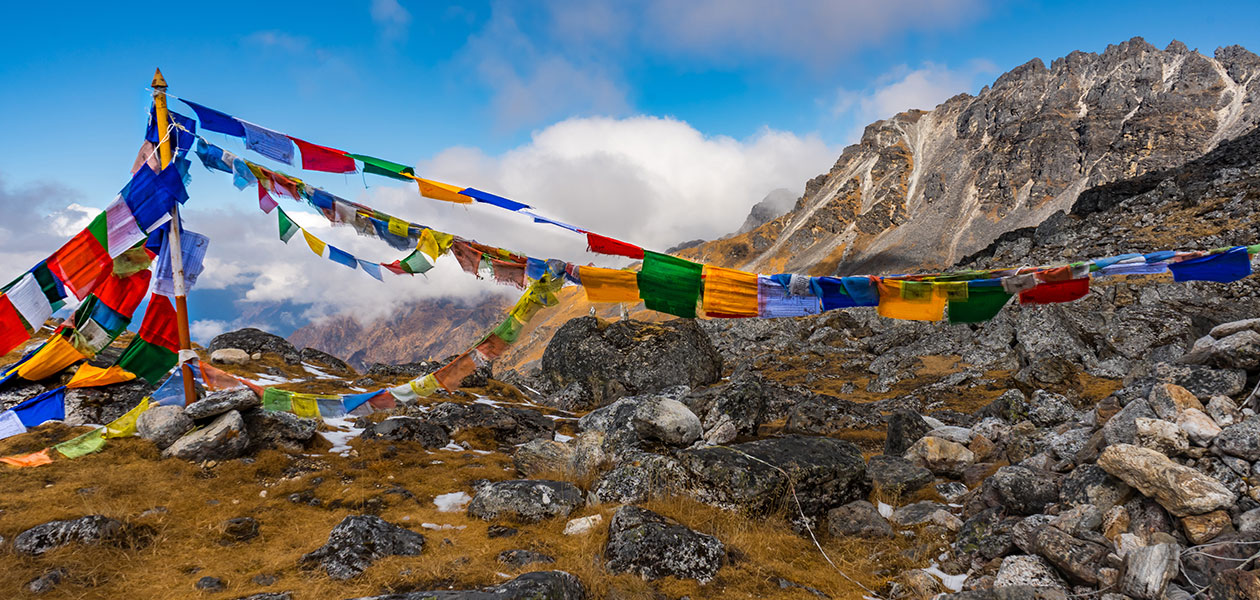
Trail Conditions
You should be aware of the trail conditions of every season. The trail condition directly impacts your walking performance, and you cannot have an enjoyable trekking experience when the paths are muddy or slippery. Similarly, it is important to check, inquire and be well informed if the trails are safe and secure during that particular time during trekking or not. Usually, the trails are dry in the peak season of autumn and spring, so it is the most recommended by trekkers and experts. However, if you are trekking in summer/ monsoon or winter, make sure to research the safety of the trails, take insights from the guide, and start the trek only after ensuring that traversing isn’t risky.
Personal Fitness and Experience
The fitness level and experience should be kept in high consideration when selecting a time for Kanchenjunga Trek. During the Kanchenjunga Trek you will walk through the rugged and wavy terrains for long hours. If you are well-experienced and physically fit, you can navigate the challenging sections of the trail smoothly. During the summer/ monsoon season, especially when there is rainfall, the paths can get muddy and slippery, so you will need extra effort for navigation. Similarly, in winter, some sections of the trail, especially in higher altitudes, can be full of snow which makes traversing challenging. So, a good level of training, preparation, and experience is required to embark on the journey, and you should choose the time wisely after analyzing all these aspects.
Crowds
The crowd level is one of the major things that you should consider before selecting a right. Kanchenjunga Trek passes through the off-beat paths, and is also less visited than other mainstream trekking destinations of Nepal. The trails are less crowded during the off-season (Summer/ Monsoon and Winter). However, if you like interactive journeys and enjoy communicating with fellow travelers then you can trek in the peak season of Autumn and Spring. Communicating with fellow trekkers makes the trek interesting and enjoyable.
Weather Conditions
The weather is one of the most important things that you should consider and then proceed towards selecting the trek. When the weather and climatic conditions are suitable you will get numerous opportunities to witness the clear views of the snow-clad mountains and pristine landscapes of the region. On the contrary, when the weather is gloomy or foggy, then the views can get obstructed, which is a major hindrance that stands in your way of achieving your goal of witnessing panoramic views of the mountains. Similarly, when the weather conditions are adverse, the walking pace will be affected, and it makes the trek challenging, leaving you with unpleasant experiences. So, it is highly advisable to select which is considered best in terms of weather.
Safety
You should consider which season is the safest and make decisions after researching and properly analyzing all the aspects. Safety should always be your first priority, and you should do proper research on what are the possible risks that are associated with each season and select the season that ensures a safe and secure journey. During the high-altitude adventure, like trekking, you will be walking through the different remote areas for numerous days.
While the journey is invigorating and thrilling, it also comes with a set of concerns. Many efforts have been made by the authorities to ensure safety, like they issue permits, which help them to keep track of the trekkers, and along with that, the guides and porters will accompany them too. However, there are external factors that can be beyond the control, especially the weather-related challenges and unforeseen events that may take place during trekking.
When you select the most recommended seasons (Spring and Autumn), the possibility occurrence of any unforeseen events is rare, so it is highly recommended to trek in the peak season, considering the safety level. Additionally, you must have travel insurance that provides financial protection against the risks that come along when trekking. We recommend choosing a policy that provides coverage for medical expenses in case of injuries, and also helicopter evacuation for emergencies that may occur during a trek.
Accommodation Availability During Each Season

Many trekkers visit Kanchenjunga in peak seasons (Spring and Autumn). The trails are still remote, and there are fewer teahouses compared to other mainstream trekking destinations. So, during peak season, you should make sure to book the accommodation in advance for a comfortable and secure stay. The accommodation facilities are basic, and most of the tea houses along the trail provide a cozy room with beds, blankets, and pillows. Even though the trails are quieter in the off-season, we highly recommend checking the availability and making reservations accordingly.
The tea houses along the trail not only provide accommodation services but also provide warm meals to the trekkers along the way, which helps them stay energized throughout the trek. If you embark on this journey with us, we will be responsible for arrangements of accommodation in the finest tea houses of the Kanchenjunga Region.
Gain Insights On:
Packing Recommendations for Kanchenjunga Trekking
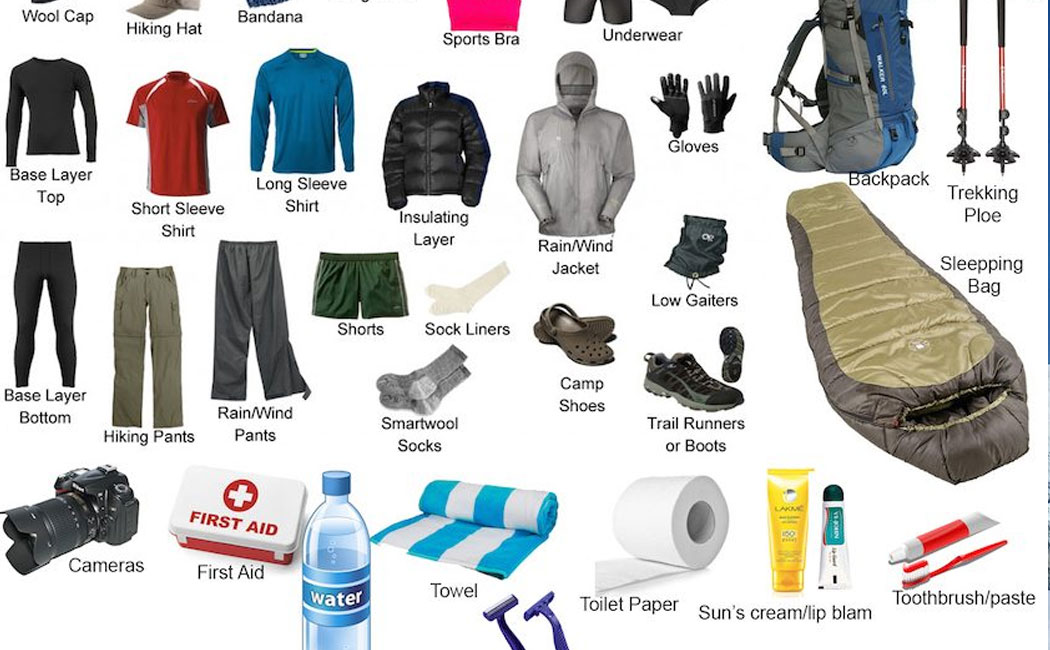
Packing is important when venturing on high-altitude treks. There are several essentials that you need during the journey. As those essentials aren’t available in remote areas you must pack them wisely, making a checklist. The weather in the higher zones of the Kanchenjunga Region is usually cold, so you must pack Down Jackets, Warm Gloves, Woolen Caps, Thermals, and scarves in every season. Even though daytime temperature is mild in autumn and spring, the mornings and nights can get colder, and during summer/monsoon the region cools down and can get chilly after rainfall, so you will need warm clothes to protect yourself from the cold.
The weather in the mountains can get unpredictable, so Rain Gear is also an important item that is required in every season. You should also pack quick-drying clothes during the summer/ monsoon season. During the winter season, the weather is extremely cold, so you should add Sweaters, Fleece Jackets, Woolen Socks, and high-quality Sleeping Bags to your luggage. Similarly, the presence of snow in the trails in winter makes navigation challenging so bringing along crampons and ice axes can make traversing through such paths easier. The daytime weather is moderate during the spring and autumn seasons, so make sure to add comfortable lightweight clothes to your baggage.
Other important items that are required for every season are:
- Reusable Water Bottle
- Waterproof and Windproof Jackets
- Backpack
- Headlamps
- Trekking Poles
- Flash Lights
- Sleeping Bags
- Water Purification Tablets
- First Aid Kit (Medicines like PainKillers, Paracetamol and Bandages)
- Small Mirror
- Insect Repellent
- Sunscreen
- Lip Balm
- Maps
- Portable Charger
- Soap
- Tissues and Wet Wipes
- Hand Sanitizer
- Towel
- Undergarments
Conclusion
One of the main reasons for embarking on the trek is to witness the magnificent beauty of nature and ensure an enjoyable journey. When you trek in the ideal and most recommended season, you will have a scenic, secure, pleasant, and enjoyable journey. Analyzing all the perks of each, we can conclude that the best time to trek Kanchenjunga is indeed Autumn and Spring. The views during these two seasons are ethereal, and the trekking atmosphere is delightful, which makes the whole journey rejuvenating, leaving you with the memories of a lifetime.

